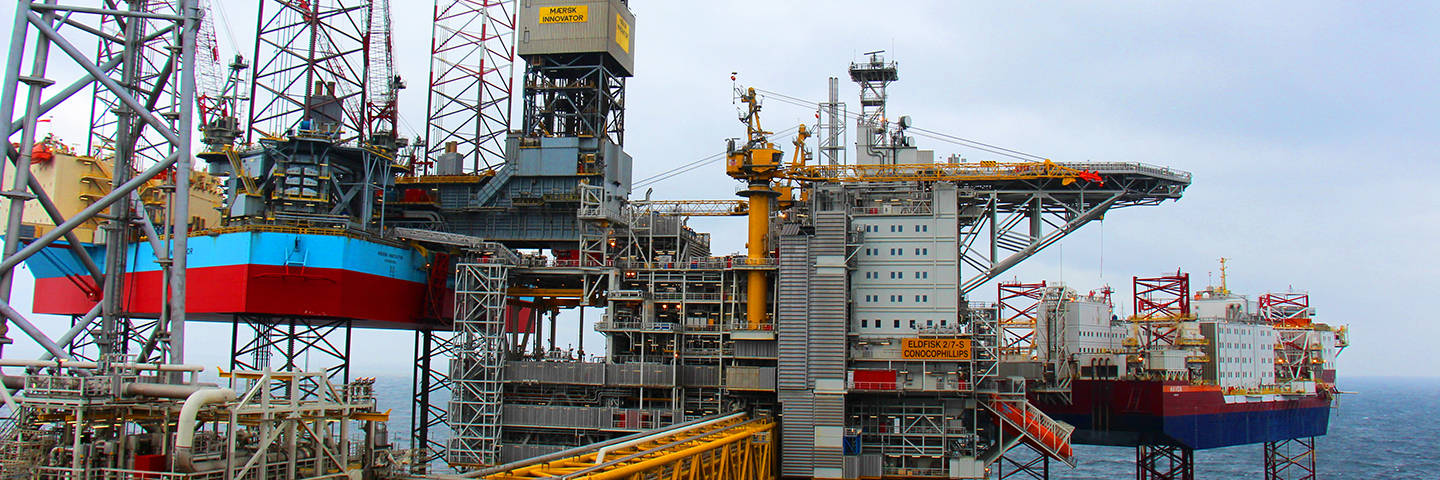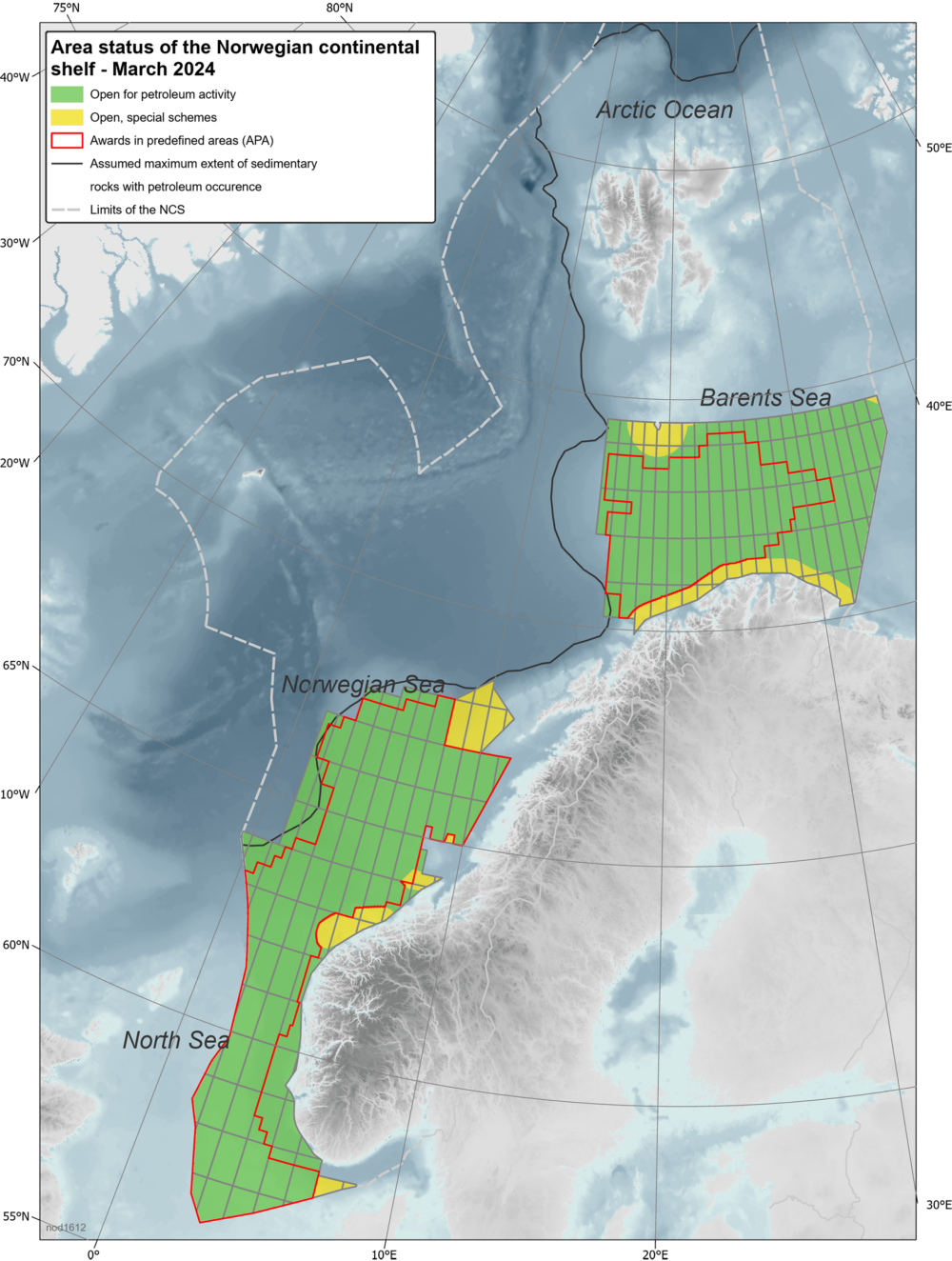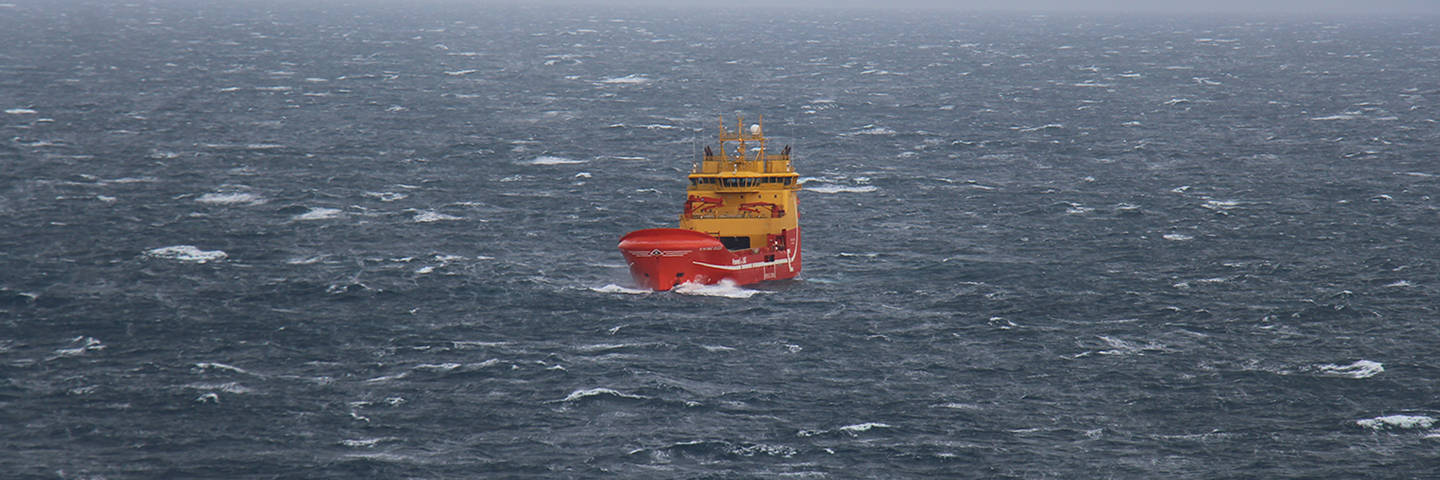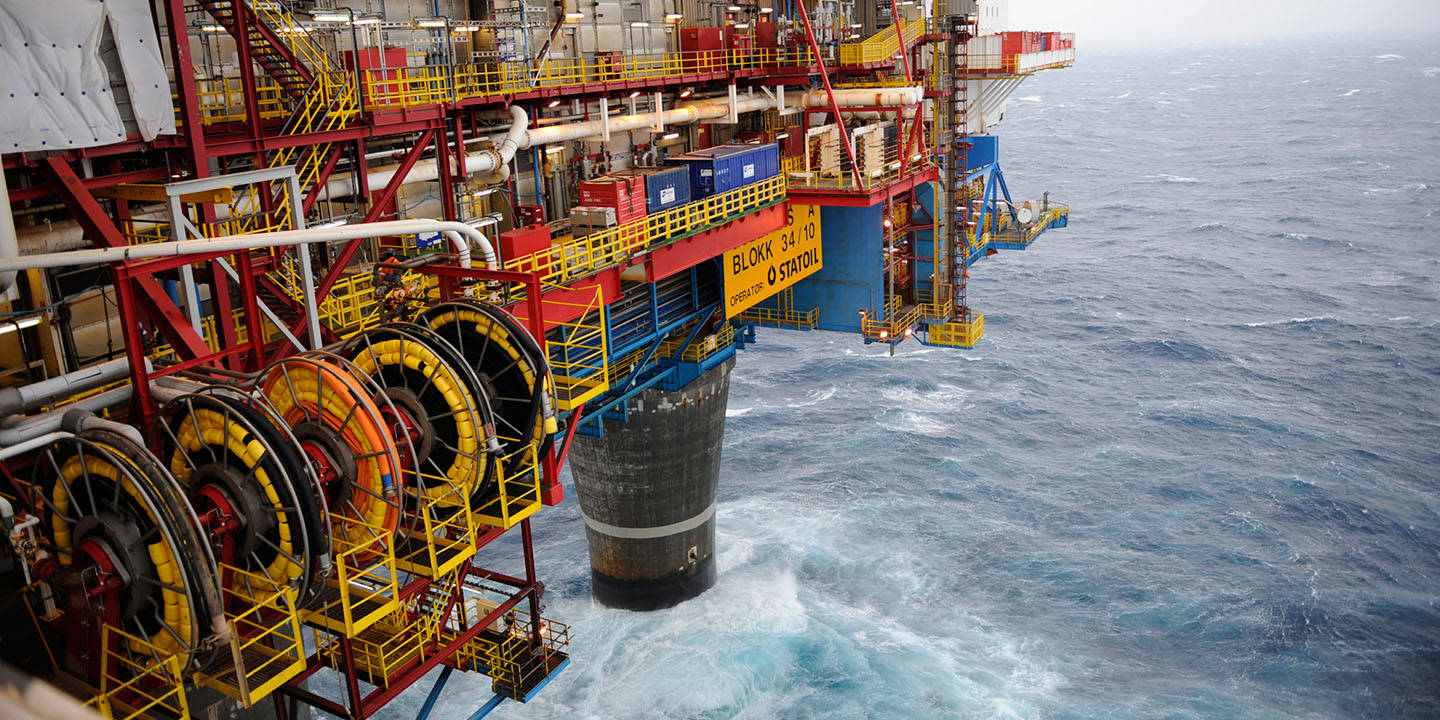The petroleum industry is the largest and most important sector of Norway’s economy measured in terms of value added, government revenues, investments and export value. It is therefore essential that the way the industry is organised and the division of roles and responsibilities takes all important public interests into account and ensures that value creation from petroleum resources benefits Norwegian society as a whole.
State management and control of the industry is therefore required. Norway has put this in place through extensive legislation that requires companies to obtain licences and approval from the competent authorities for all phases of petroleum activities.
The Petroleum Act (Act of 29 November 1996 No. 72 relating to petroleum activities) provides the general legal basis for sound resource management, including the licensing system that gives companies rights to engage in petroleum operations. The Act establishes that the Norwegian state has the proprietary right to subsea petroleum deposits on the Norwegian continental shelf.

The life cycle
From area opening procedures to the end of production
Petroleum activities can be divided into several phases. An area must be opened for petroleum activities before any operations are permitted. The first phase is exploration, when any subsea petroleum resources are mapped and proved. If commercially viable discoveries are made, activities enter a new phase with the aim of developing the field and producing from it, at the same time ensuring sound resource management and maximising value creation. When it is no longer possible to produce profitably from a field, operations must be closed down and the installations disposed of (made safe in place or removed).
Before licences can be awarded for petroleum activities, the area where activities are planned must have been officially opened. As part of this process, the Ministry of Energy is required to carry out an impact assessment including an evaluation of the possible economic, social and environmental impacts of the activities. During an opening process, the authorities ensure that they have an overview of all relevant arguments for and against petroleum activities in the area in question.
In addition, the general public and the parties affected are given an opportunity to put forward their views. A resource assessment of the area is also made as part of the opening process. Decisions on whether or not to open new areas for petroleum activities are made by the Storting (Norwegian parliament). Impact assessments and opening of new areas are governed by Chapter 3 of the Petroleum Act and Chapter 2a of the Petroleum Regulations.
A production licence grants exclusive rights to exploration, exploration drilling and production of petroleum in the area covered by the licence. It also regulates other rights and duties of the licensees vis-à-vis the Norwegian state. Production licences supplement the provisions of the legislation and set out detailed conditions for activities in a particular area. Licensees become the owners of a share of the oil and gas produced proportional to their share of the ownership. An example of a standard production licence with appendices is available on the website of the Ministry of Energy.
Production licences are normally awarded through licensing rounds, in which the Ministry announces that companies can apply for production licences in certain geographical areas (blocks). The announcement procedures, who can apply, the content of applications and application procedures are governed by Chapter 3 of the Petroleum Act and Chapter 3 of the Petroleum Regulations. The Norwegian Offshore Directorate has drawn up detailed guidelines for applications in addition. These are available on the Directorate’s website.
On the basis of the applications received, production licences are awarded to groups of companies. Awards are made on the basis of fair, objective and non-discriminatory criteria that are announced in advance.
Unofficial translations of standard documents relating to petroleum activities:
The model production licence for awards in numbered licensing rounds (frontier areas): Model production licence (in Norwegian)
The model production licence for "Awards in Pre-defined Areas" (APA) licensing rounds (mature areas): Model Production Licence APA
Agreement concerning petroleum activities incl attachments: Companies being awarded a production licence are obliged to enter into an Agreement concerning petroleum activities. The agreement consists of a main part – Special provisions – and two attachments; Attachment A – Joint Operating Agreement and Attachment B – Accounting Agreement. These standard documents have been prepared in two different versions depending on whether the State has or has not retained a participating interest in the relevant production licence. The documents are available here:
Agreement concerning Petroleum Activities incl Attachments A and B – with State participation
Agreement concerning Petroleum Activities incl Attachments A and B – without State participation
"Standard stratigraphic agreement": Licensees in production licences for stratigraphically divided areas will be required to enter into a standardized agreement regulating the relationship between the two licence groups.
The model unit agreement has been prepared in cooperation with Offshore Norge and was approved by the Ministry of Energy in 2012. The agreement is based on the model joint operating agreement, and reflects the latest amendments made to that agreement with respect to dispute resolution: Model unit agreement
In each case, the Ministry designates an operator for the joint venture, and this company is responsible for the operational activities authorised by the licence. The licensee group finances the activities jointly. Each licensee is expected to make use of its own particular expertise, and all the licensees have a responsibility for controlling the operator’s activities.
Licensing rounds
Two types of licensing rounds have been established to ensure adequate exploration of both mature and frontier areas of the Norwegian continental shelf. All areas that are open and therefore available for petroleum activities may be announced in numbered licensing rounds or through the system of awards in predefined areas (APA). The parts of the shelf to be included in each of the two types of rounds are determined on the basis of expert assessments of the maturity of different areas, particularly in relation to the need for stepwise exploration and utilisation of time-critical resources.
The main differences between numbered licensing rounds and APA rounds are in the stages before licensing rounds are announced; after this stage, the procedures and award process are very similar.
Numbered licensing rounds in frontier areas
Numbered licensing rounds are used for frontier areas, where there is limited knowledge of the geology, greater technical challenges than in mature areas and a lack of infrastructure.
The strategy for licensing rounds in recently opened and frontier areas has generally been based on the principle of step by step or sequential exploration. This means that the results gained from exploration wells drilled in selected blocks in an area should be available before any new blocks are announced in the same area. In this way, it is possible to map large areas with a relatively small number of wells.
Before a numbered licensing round is announced, there is a nomination process. This starts when all the oil companies on the Norwegian shelf, both existing licensees and prequalified companies, are asked to nominate blocks for inclusion in the licensing round.
There is a limit on the number of blocks companies can nominate, and they are asked to give grounds for their selections based on their own geological assessments. The Norwegian Offshore Directorate reviews all the nominations it receives and makes its own geological assessment.
Next, the Directorate sends its recommendations for the blocks to be included in the licensing round to the Ministry of Energy. In the 20th licensing round, the Directorate’s recommendations were for the first time submitted to public consultation, and this has become normal procedure in subsequent licensing rounds. The Government makes the final decision on which blocks are to be announced, including any special environmental and fisheries-related requirements for petroleum activities.
After the applications have been received, they are assessed in relation to criteria announced in advance and negotiations are held with the companies. The Government decides which licences to award to which companies, and the final awards are formally made by the King in Council.
Numbered licensing rounds have been held since 1965, and are normally announced every other year.
Awards in predefined areas (APA) in mature areas
APA licensing rounds are used for mature areas, where petroleum activities have been in progress for many years. In such areas the geology is well known, there are fewer technical challenges, and there is well developed or planned infrastructure.
As new areas mature, the APA areas can be expanded within the framework for petroleum activities in each sea area. The areas of the Norwegian shelf where most is known about the geology are included on the basis of expert assessments. No acreage is withdrawn from the APA areas, although exceptions can be made if important new information becomes available.
There is no nomination step in APA rounds. Before a round is announced, the Offshore Directorate sends its recommendations on the inclusion of any new blocks in the APA areas, based on expert assessments, to the Ministry of Energy. The final proposal for APA areas to be announced in the licensing round is submitted to public consultation.
As in numbered licensing rounds, the Government makes the final decision on which blocks are to be announced, including any special environmental and fisheries-related requirements for petroleum activities. Companies can apply for licences for all acreage in APA areas not already covered by production licences.
After the applications have been received, they are assessed in relation to criteria announced in advance and negotiations are held with the companies. Which licences to be offered is thereafter decided by the the Government and the final awards are made by the King in Council.
The APA system was introduced in 2003 to ensure that profitable resources in mature areas are proven and recovered before existing infrastructure is shut down. If this is not done, profitable resources may remain unrecovered because the deposits are too small to justify the building of separate infrastructure. 22 APA licensing rounds have so far been initated (APA 2003-2024).
APA licensing rounds are announced annually.
Once awarded, a production licence applies for an initial period of up to ten years, which is reserved for exploration activity. To ensure that the area to which the production licence applies is explored properly, the licensee group is obliged under the terms of the licence to carry out a work programme. The obligatory work commitment of the production licence may include geological and/or geophysical activities and exploration drilling. The licence includes deadlines for carrying out the different activities.
If all the licensees agree, they may relinquish the production licence once they have completed the obligatory work. Areas relinquished in this way can later be awarded to new licensee groups. This ensures that mapping of the petroleum resources in different parts of the Norwegian continental shelf is steadily improved. As a result, we now have extensive knowledge of the subsea resources in many areas.
Licensing position for the Norwegian shelf
The map gives an overview of the current status of the Norwegian continental shelf. The green areas have been opened for petroleum activity by the Storting (Norwegian parliament). The yellow areas have also been opened, but are subject to special arrangements as described in the white paper no. 20 (2019-2020). The areas outlined in red are covered by the system of awards in predefined areas (APA). Source: The Norwegian Offshore Directorate

If the licensees make a discovery and wish to continue work under the licence after they have fulfilled their work obligation, they are entitled to an extension period for the licence. The duration of the extension period is determined by the Ministry of Energy when the licence is awarded, and in most cases is 30 years.
Field development and operation take place during the extension period. If the licensees wish to develop a field, they are obliged to do this in a responsible way. The companies are responsible for planning and implementing development projects, but each project requires prior approval from the Ministry. Major and/or important projects are put before the Storting before the Ministry gives its approval.
The licensees must submit a plan for development and operation (PDO) of a new deposit to the Ministry as a basis for approval. If the project includes pipelines or onshore terminals, a separate plan for installation and operation (PIO) of these must also be submitted and approved.
A PDO/PIO consists of a development plan and an impact assessment. The latter provides an overview of the likely impacts of the project on the environment, fisheries and society otherwise. The report on the impact assessment is sent to all those who may be affected by the project so that they have an opportunity to put forward their views. The process ensures that all relevant arguments for and against the project are known before a decision on development is taken, that the field developments approved are responsible, and that their impacts on other public interests are acceptable. In special cases, the Ministry may exempt licensees from the requirement to submit a PDO/PIO.
The Ministry of Energy has together with the Ministry of Labour and Social Inclusion drawn up guidelines for PDOs and PIOs, which explain the legislation further and detail what the authorities expect from developers. The guidelines are also available on the Norwegian Offshore Directorate’s website.
The development and operation phase is further regulated by Chapter 4 of the Petroleum Act and Chapter 4 of the Petroleum Regulations.

Requirement to submit a decommissioning plan
The Petroleum Act requires licensees to submit a decommissioning plan to the Ministry between two and five years before the production licence expires or is relinquished, or use of a petroleum installation will be terminated permanently. A decommissioning plan consists of two parts: an impact assessment and plans for disposing of the installations.
The impact assessment must provide an overview of the possible environmental and other impacts of the shut-down process. The disposal part must contain detailed plans for closing down operations and decommissioning installations in the best possible way.
Cessation of petroleum activities and decommissioning are governed by Chapter 5 of the Petroleum Act and Chapter 6 of the Petroleum Regulations. In addition, Norway is bound by international law and guidelines. In this context, Decision 98/3 under the OSPAR Convention is particularly important to the Norwegian authorities. The decision generally prohibits leaving disused offshore installations in place, with limited exceptions.
The actors in the Norwegian petroleum industry are highly professional and take a very cautious approach, and there is broad-based tripartite cooperation between employers, trade unions and the state. The Government’s ambition is for Norway’s petroleum industry to be a world leader in health, safety and environment work. The legislation that has been adopted sets strict requirements as regards the responsibilities of individual enterprises for risk identification, risk reduction, preparedness and response. Management of major accident risk is required to be an integral part of petroleum activities.
The authorities and the parties in the industry have together developed a tool for measuring trends in risk levels in Norwegian petroleum activities, known as RNNP. The Norwegian Offshore Directorate publishes annual reports that give a picture of risk trends in the industry as a whole.
Liability for pollution damage is governed by Chapter 7 of the Petroleum Act, which states that licensees are strictly liable for pollution damage, i.e. they are liable regardless of fault.
Chapters 9 and 10 of the Petroleum Act and regulations under the Act govern safety requirements for the industry.
